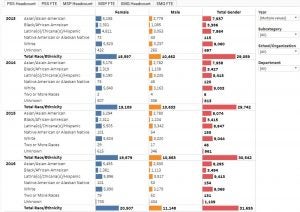An
Agreed-Upon Statement is a public statement that is drafted jointly by the University and another party as part of a legally binding settlement. After an investigation finds a policy violation, a disciplinary process can be activated. That process is usually quite elaborate, similar to a full-blown trial, and is conducted by other actors within the University, such as the Academic Senate. Instead of going through that difficult and uncertain process, the University and the Respondent (an individual or entity alleged to have violated University Policy) might settle the case on specific negotiated terms. One of those terms can be (but will not always be) an Agreed-Upon Statement that allows our community to learn more about how the case ultimately got resolved.
No they don’t. To be clear, an Agreed-Upon Statement is produced only in a legal settlement. But, discrimination policy violations do not always produce a legal settlement. Accordingly, these statements should not be read to constitute either the full population of investigation results or a random sample. For more general information about complaints, investigations, and their results, please see our
Public Accountability Reports.
Each Agreed-Upon Statement is the product of complex negotiations between the University and the Respondent (the individual or entity alleged to have violated University Policy). The individual circumstances of each particular case will dictate the precise language and level of detail that will appear. The Office of Equity, Diversity and Inclusion is always trying to maximize transparency and accountability but rarely can get everything it seeks.
Again, remember that without all the details, it’s actually quite hard to know whether the resolutions are “harsher” or “more lenient” than others or than they should be. The settlement terms always depend on the nature and specifics of the case, the potential existence of other claims entirely unrelated to discrimination, and the idiosyncrasies of the negotiation process.
You may want to know more. But legal constraints (including federal law, state law, and University policy) and privacy considerations often limit what the University can disclose without a person’s consent. The details in the Agreed-Upon Statement are all that was consented to, as part of the legal settlement. So, nothing more will generally be available.
No. An Agreed-Upon Statement is part of a settlement contract, determined by whatever the parties agree to. This differs from information that the University must produce pursuant to a California Public Records Act (“CPRA”) request. As described by the California Attorney General’s Office, the “precept of the CPRA is that governmental records shall be disclosed to the public, upon request, unless there is a specific reason not to do so.” One such reason is an individual’s right to privacy, which includes privacy in “certain personnel, medical or similar records.” For more information on the CPRA, please visit
UCLA’s Records Management & Information Practices website.






